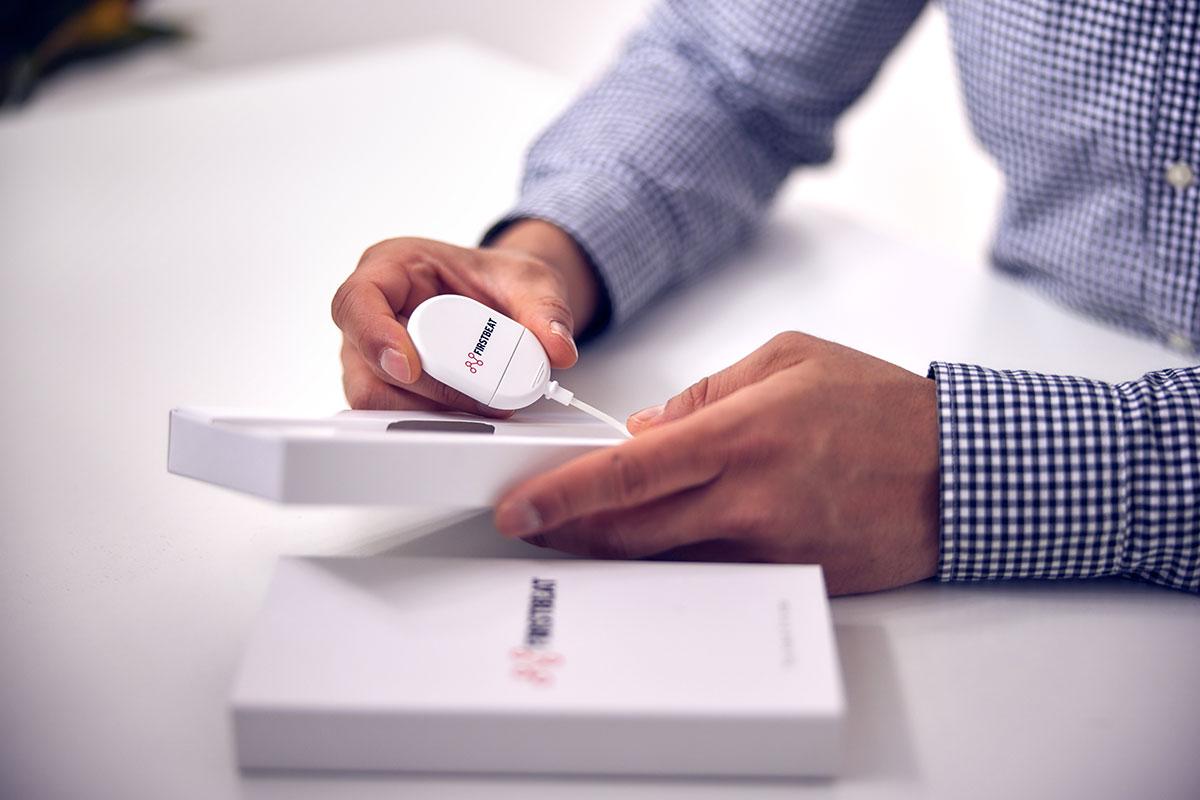
Resting heart rate is a key component in detecting stress and recovery as part of the Firstbeat Life™ service. A reliably measured resting heart rate forms a strong foundation for interpreting and monitoring the results over time.
What is a Resting Heart Rate?
Resting heart rate in the Firstbeat Life service means a heart rate level measured in a well recovered state and is determined based on several consecutive heartbeats. Typically, our heart rate only drops to the resting level during sleep.
For this reason, we recommend people start their Firstbeat Life experience with a 3-day measurement, including three sleep periods. Reaching your personal resting heart rate level usually requires favourable conditions for recovery over a period of several days.
In other words, your heart rate does not necessarily drop to the resting level after a single easy day.
Especially during the initial measurement, it’s a good idea to avoid unusual strain on the body, such as consuming large amounts of alcohol, to get a reliable resting baseline and range for heart rate variability and heart rate levels.
Heart Rate Information in Firstbeat Life
In determining a person’s resting heart rate, the Firstbeat Life service considers all the lowest measured heart rate values, as well as the amount of collected data from the individual.
The service adjusts the resting heart rate dynamically and automatically as more measurements accumulate and always attempts to use the most reliable resting heart rate when calculating the results. The resting heart rate cannot be manually adjusted in the Firstbeat Life service. The measured heart rate values are presented under ”Other measurement information” in the results, including the resting heart rate and maximal heart rate as the personal background values, as well as the lowest, average, and highest measured heart rate for each measured day.
The lowest measured heart rate level is typically between 40–60 beats per minute (bpm), with the average slightly over 50 bpm. A heart rate that does not drop below 65 bpm during rest, while using the Firstbeat Life service, is considered higher than typical.
If the heart rate is always higher than 70 bpm, even during rest, Firstbeat Life recommends a health check to rule out possible underlying health problems. If the heart rate level is very high, the result usually shows a lot of stress.
What is the Resting Heart Rate Affected by?
Many factors affect the resting heart rate level, some of which we cannot directly influence, such as genetics, illness, or medications. Because of this, it’s important to monitor the resting heart rate relative to everyone’s own level and measurement history.
When the lowest measured heart rate during rest or sleep is low, and close to one’s own resting level, it suggests good recovery status and restorative sleep. If the lowest measured value on a given day is over 5 bpm higher than one’s established resting heart rate, it may indicate acute stress or prolonged overload.
Keeping an eye on the lowest measured heart rate when making measurements is an excellent way to monitor the overall load over time.
Lower Resting Heart Rate is Associated with Better Fitness and Recovery
Endurance training and improved aerobic fitness increase the size and stroke volume of the heart, making the heart stronger and allowing it to pump more oxygen-rich blood to the muscles and the brain.
A lower resting heart rate over time is often associated with improved fitness and better capacity to recover. People who are physically active have, on average, a 7-10 bpm lower resting heart rate than people who are physically inactive. The lowest measured heart rate levels among Firstbeat Life users have been below 30 bpm.
Resting heart rate is an interesting metric and monitoring changes and trends in one’s resting heart rate over time can offer valuable insights. There is no need to worry if your resting heart rate level is sometimes a bit higher than usual, but if the measured level stays chronically high, relative to one’s own history and the established resting heart rate level, it’s good to reflect on what might be causing the change, and if needed, consider scheduling further exams or a health check.
Firstbeat Life is the leading technology to support the health and well-being of your customers. It offers you a unique capability to succeed in the growing market for proactive health and well-being services. Learn more about Firstbeat Life.
If you liked this article, you should subscribe to our newsletter.
You might also be interested in

My Experience with Covid-19 – and What the Data Showed on The Road to Recovery
I stayed clear of Covid-19 for two and a half years, with vaccinations, good luck, a healthy lifestyle, and common sense (masks, hand washing, and avoiding crowded places whenever I…

Firstbeat Life: How Do You Get Employees Engaged in Corporate Wellness?
When it comes to corporate wellness, one of the most common problems is getting employees engaged. So, what to do? Our specialist gives concrete tips, how to get employees commit to small changes.

Notifications on Poor Recovery: Take a Proactive Approach to Your Health
Physiological data can reveal how your body is coping with everyday life. But how do you know when you need to address certain issues? Personalized notifications in the Firstbeat Life solution let you know when your measurement results need extra attention.

